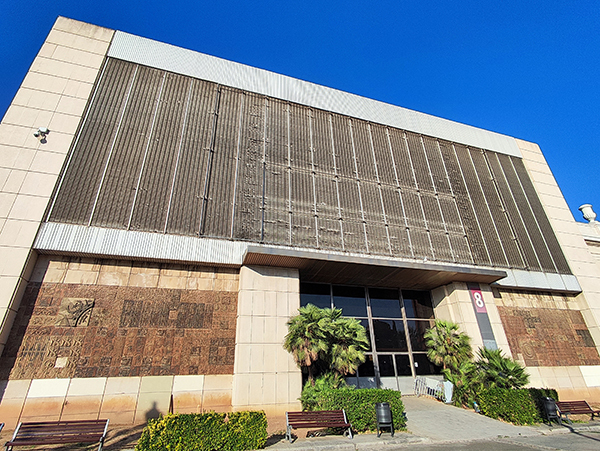Palace of Metallurgy in Barcelona (Spain)
$ 30,00
Description
Location: Barcelona, Spain
Taken on: September 10, 2023
Format: JPEG
File size: 6.5 MB
Dimensions: 3280 x 2464 pixels
DPI: 300
Photographer: Andrey Kashukov, Cyprus
Photo can be used in posters, brochures, magazines, websites, blogs, business cards, applications, social media branding, packaging, postcards, notebooks, invitation backgrounds, flyers, banners, badges, stickers, collages, booklets, illustrations, etc.
Photo can be used in applications: Adobe Photoshop, Adobe Photoshop Lightroom, Adobe Photoshop Elements, Adobe InDesign, Adobe Illustrator, Adobe XD, Adobe Express, Adobe After Effects, GIMP, Photopea, Krita, Pixlr E, Pixlr X, Paint.NET, Affinity Photo, Corel PaintShop Pro, CorelDRAW Graphics Suite, Capture One Pro, Luminar Neo, Pixelmator Pro, ACDSee Photo Studio Ultimate, Affinity Designer, Procreate, Sketch, etc.
Palace of Metallurgy in Barcelona Under a Clear Blue Sky
Capture the monumental presence of Barcelona’s architectural heritage with this striking digital photograph of the Palace of Metallurgy (Palau de la Metal·lúrgia). Taken on a bright, sunny day on September 10, 2023, this image showcases the building’s unique design from a compelling low-angle perspective, emphasizing its scale and grandeur against a flawless, deep blue sky.
The photograph beautifully details the contrast between the building’s distinct sections: the vast, textured metallic upper facade and the solid, stone-clad lower level. Adorning the lower walls are intricate bas-reliefs that tell a story of industry and art, adding a layer of historical depth. The warm sunlight highlights the rich, earthy tones of the stone and the cool metallic sheen above, while the crisp shadows give the structure a powerful three-dimensional quality. Lush palm trees and manicured hedges frame the entrance, adding a touch of nature to the urban architectural scene.
This image encapsulates a moment of stillness and architectural appreciation in the vibrant city of Barcelona, perfect for projects that require a blend of history, modernism, and Mediterranean warmth.
Photo Features:
- Subject: The iconic Palace of Metallurgy in Barcelona, a notable example of 1929 International Exposition architecture.
- Perspective: A dynamic low-angle shot that accentuates the building’s imposing and grand facade.
- Atmosphere: Bright, clear, and sunny, evoking the warm and inviting climate of Spain.
- Composition: Strong architectural lines against a vibrant, cloudless blue sky.
- Details: Features the unique textures of the building’s materials, including the detailed bas-reliefs on the stone walls, the corrugated metal screen, and the sleek glass entrance.
- Color Palette: A harmonious blend of earthy browns and beiges, metallic grays, and a striking azure blue.
Ideal For:
- Websites & Blogs: Perfect for travelogues, architectural features, and articles about Barcelona’s history and landmarks.
- Marketing & Promotional Materials: An eye-catching visual for tourism campaigns, cultural event promotions, or architectural tours.
- Presentations & Educational Content: A high-quality image to illustrate topics in architecture, urban design, or Spanish history.
- Backgrounds & Banners: A compelling and clean background for websites, social media profiles, or digital presentations.
- Social Media: A unique and engaging post for content creators focusing on travel, architecture, or European culture.
A Monument of Industry and Art: The Palace of Metallurgy, Barcelona
The Palace of Metallurgy (Palau de la Metal·lúrgia), also known as Hall 8 of the Fira de Barcelona, stands as a significant testament to the industrial ambition and architectural innovation of early 20th-century Barcelona. Located on the bustling Avinguda de la Reina Maria Cristina on the hill of Montjuïc, this grand edifice was a cornerstone of the celebrated 1929 Barcelona International Exposition.
Originally christened the Palace of Industry (Palau de la Indústria), the building was designed by the distinguished architects Alexandre Soler i March and Amadeu Llopart i Vilalta. They conceived a structure that masterfully blends the clean, geometric lines of Art Deco with the dramatic flair of Central European Expressionism. Its imposing facade, characterized by a vast, screen-like upper section and a stately stone-clad base, was designed to celebrate the nation’s industrial prowess in metallurgy, electricity, and motive force.
A key artistic feature of the palace is the series of allegorical bas-reliefs adorning its lower facade. These significant sculptural works were created by the acclaimed Noucentista sculptor Enric Casanovas, who was awarded a Gold Medal at the 1929 Exposition for his contributions. While the specific allegorical narrative of each panel is not widely documented, they are understood to represent the human endeavor and triumph within the fields of industry and labor, themes central to the building’s original purpose.
The interior of the 16,000-square-meter palace was designed around a massive central hall, crowned by a distinctive polyhedral dome with a lantern, a feature that allowed natural light to illuminate the industrial exhibits below. This grand internal space was divided into five interconnected zones, showcasing the latest advancements of the era.
After the exposition, the Palace of Metallurgy continued its life as a prominent public venue. It was notably repurposed to host the fencing competitions and the fencing portion of the modern pentathlon during the 1992 Summer Olympics, a role that required significant interior adaptation but brought the historic structure to a global audience once more.
Today, the palace is integrated into the Fira de Barcelona trade fair complex as Hall 8. It continues to host a variety of events and exhibitions, serving as a vital space for commerce and congregation. The building is part of a grand-scale urban renewal project for the Montjuïc area, with plans to further modernize the Fira facilities. The renovation of the Palace of Metallurgy is slated for the second phase of this project, scheduled to take place after 2029, ensuring that this architectural landmark will continue to evolve while remaining a symbol of Barcelona’s rich industrial and cultural history.
Related products
-
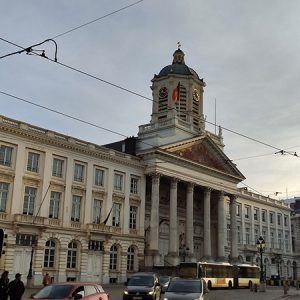
Brussels-Luxembourg Railway Station (former building) in Brussels (Belgium)
$ 30,00 Add to cart Quick Checkout -
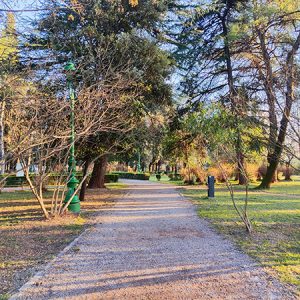
King’s Park in Podgorica (Montenegro) #1
$ 30,00 Add to cart Quick Checkout -
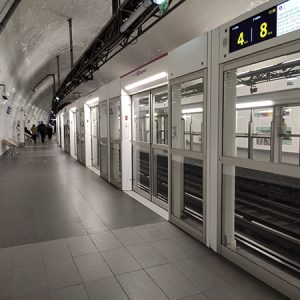
Paris Métro Line 4 Platform (France)
$ 30,00 Add to cart Quick Checkout -
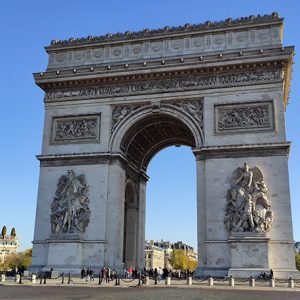
Arc de Triomphe, Paris (France) #2
$ 30,00 Add to cart Quick Checkout
